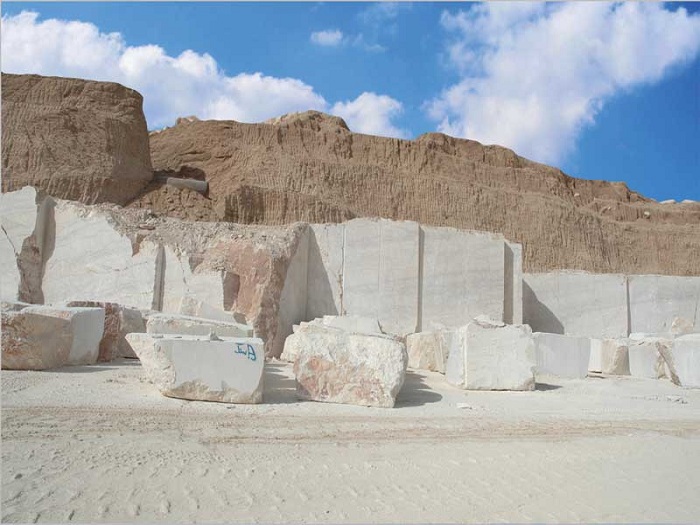Lack of market, Achilles heel of small mines

Some experts argue that despite large state-owned mines, there is no longer a market for small-scale mining in the private sector, so problems such as the lack of modern machinery, the multiplicity of laws and bureaucracy, and the problem of marketing to sell minerals are some of the issues.
According to the Iran International Stone Exhibition, the plan to activate small and medium mines in different parts of the country, which were semi-inactive or closed due to internal or international conditions, was defined in December 2016 and became operational last year, reviving, activating and developing small mines. This year's plans are to help with production.
Recently, Khodadad Gharibpour, chairman of Imidro's executive board, said about the organization's performance in reviving and activating small-scale mines: "So far, 1,466 mines have been monitored and by the end of 1398, about 1,466 mines have been rehabilitated."
Emphasizing the importance of reviving these types of mines and helping them grow employment, he said: "Small mines, due to job creation and expansion in different parts of the country, can play a very important role in creating sustainable employment in the mining sector and balanced development."
With all this emphasis, the problem is that small mines have not yet been able to stand on their own two feet. Some experts suggest that despite the large state-owned mines, there is no longer a market for small-scale mining in the private sector, so problems such as the lack of machinery today, the multiplicity of laws and bureaucracy, and the problem of marketing to sell minerals are some of the issues.
Not having machines today
Abbas Ali Irvani, director general of the Ministry of Industry, Mines and Trade's Office of Mining Supervision, said: "The plan to equip small mines is one of the plans of the resistance economy, which has been considered by the relevant units of the ministry, including the Minerals Production Company."
The director general of the Ministry of Industry, Mines and Trade's Office of Minerals Monitoring said: "Although some small mines have been active in the past, they are closed at times due to lack of markets, so the market is the first thing these mines need." have.
Emphasizing that one of the problems in launching small mines is the market problem, Irvani said: "However, the market needs a certain amount of minerals and does not have more traction." Meanwhile, miners must work on processing minerals that can be processed to create value-added and avoid the sale of raw materials to provide the ground for export growth and find their own markets.
The director general of the Ministry of Industry, Mines and Trade's Office of Mining Supervision continued to examine the reasons for the closure of small mines: The closure of small mines has other reasons, including local opposition, stone-throwing and other lack of machinery. The use of old and worn-out machinery is an issue that many small mines face today. In the current situation, due to the increase in the dollar rate, the operator is not able to buy and supply machines today.
Referring to the positive role of the Mining Investment Insurance Fund, Irvani said: "Given the need for financial support for mining activists, they can grow if the Mining Investment Insurance Fund can provide facilities for mining machinery with modern technology." Small miners can import second-hand machinery by obtaining these facilities and obtaining licenses.
The Director General of the Office of Mining Supervision of the Ministry of Industry, Mines and Trade, in response to the question of how you predict the situation of small mines this year, said: Trade is not good. About 300 mines were to be rehabilitated, which we hope will increase to 1,000 according to the plans and talks that are being proposed.
Administrative bureaucracy is a big obstacle
Malik Rahmati, Vice President of the Iranian Stone Association, stressed the need to pay attention to the issue of exploration in increasing production and activity of small and medium mines, said: Iran is one of the ten mining countries in the world that has a significant share of decorative stone reserves. While each province has a capacity for decorative stones, unfortunately no serious attention has been paid to new discoveries. He stressed: "If we want sustainable development and mutation production, we must put serious attention to new discoveries on the agenda and consider incentives for those who do exploration."
Referring to the negative role of organizations and bureaucracy in the development of small and medium-sized mines, the vice president of the Iranian Stone Association said: "Many small mines that have been closed have been shut down under the pretext of dispersing and disturbing some organizations related to mining activities."
"Given this, the least we can do is eliminate the excuses of bureaucratic and administrative disturbances," he said. By doing so, we can provide an opportunity for small mines to recover.
Instability in international markets
Rahmati said that one of the biggest obstacles to the development of the country's mining industry is the unsustainability of directives and regulations issued by executive and policy-making bodies. " In the new year, the issuance of sudden regulations and directives that lead to instability in the domestic and international market can be avoided.
He emphasized: "What is the cause of growth and development is the stability of laws and sustainability in implementation, which leads to balanced development."
In the end, the Vice President of the Iranian Stone Association pointed to the role of machines in the development of small mines and said: "What turns the wheel of mines is the existence of machines suitable for extraction." Unfortunately, today we have problems importing new machines, but we can make it easier to put second-hand machines on the agenda. Let's not forget that injecting machinery into small mines can solve a huge problem.










